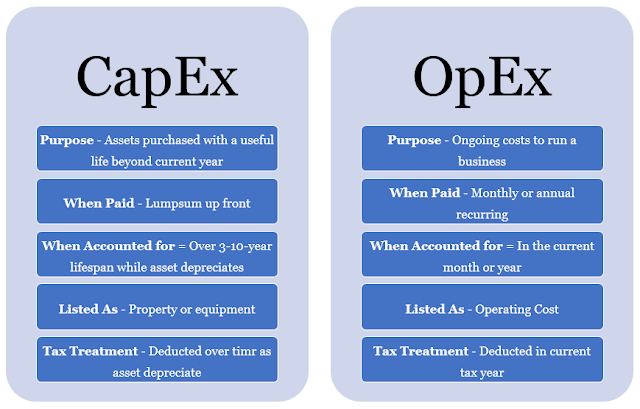Capital Expenditure (CapEx) is the spending of money on physical infrastructure upfront and then deducting that expense from your tax bill over time. Capital Expenditure (CapEx) is an upfront cost, which has a value that reduces over time.
Server costs
This area includes all hardware components and the cost of supporting them.
When purchasing servers, make sure to design fault tolerance and redundancy,
such as server clustering, redundant power supplies, and uninterruptible power supplies. When a server needs to be replaced or added to a data centre,
you need to pay for the computer. This can affect your immediate cash flow because you must pay for the server upfront.
Storage costs
This area includes all storage hardware components and the cost of supporting it. Based on the application and level of fault tolerance,
centralized storage can be expensive. For larger organizations, you can create tiers of storage where more expensive fault‐tolerant storage is used for critical applications and lower expense storage is used for lower priority data.
Network costs
Networking costs include all on-premises hardware components, including cabling, switches, access points, and routers. This also includes a wide area network (WAN) and Internet connections.
Backup and archive costs
This is the cost to back up, copy, or archive data. Options might include setting up a backup to or from the cloud. There's an upfront cost for the hardware and additional costs for backup maintenance and consumables like tapes.
Organization continuity and disaster recovery costs
Along with server fault tolerance and redundancy, you need to plan for how to recover from a disaster and continue operating. Your plan should consist of creating a data recovery site. It could also include backup generators.
Most of these are upfront costs, especially if you build a data recovery the site, but there's an additional ongoing cost for the infrastructure and its
maintenance.
Datacenter infrastructure costs
These are costs for construction and building equipment, as well as future
renovation and remodelling costs that may arise as demands grow.
Additionally, this infrastructure incurs operational expenses for
electricity, floor space, cooling, and building maintenance.
Technical personnel
While not a capital expenditure, the personnel required to work on your infrastructure are specific to on-premises data centres. You will need the technical expertise and workforce to install, deploy, and manage the systems in the data centre and at the data recovery site.

